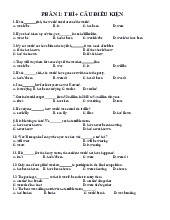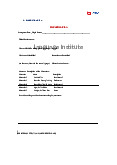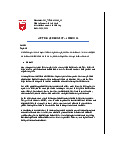
Preview text:
Reading 1: WHAT CAUSES THE BUSINESS CYCLE?
The business cycle or trade cycle is a permanent feature of market economies GDP alternately grows and
contracts. During an upturn, parts of the economy expand to the point where they are working at full
capacity, so that production, employment, business investments, profits, prices, and interest rates all tend
to rise. A long period of expansion is called a boom. But at some point there will inevitably be a
downturn. The economy will hit a peak and start to contract again, the demand for goods and services will
decline and the economy will begin to work at below its potential. Investment, output, employment,
profits, commodity and share prices, and interest rates will generally fall. A downturn that lasts more than
six months is called a recession; one that lasts for a year or two is generally called a depression or a
slump. Eventually the economy will bottom out, and there will be a recovery or an upturn.
The most probable cause of the business cycle is people’s spending or consumption decisions, which in
turn are based on expectations. A country’s output, investment, unemployment, balance of payment, and
so on, all depend on millions of decisions by consumers and businesses on whether to spend, borrow or
save. When economic times are good or when people feel confident about the future, they spend, and run
up debts. At a certain point, spending has to slow down and debts have to be paid. If interest rates
unexpectedly rise, a lot of people find themselves paying more than they anticipated on their mortgage or
rent, and so have to consume less. Similarly, if people are worried about the possibility of losing their
jobs in the near future they tend to start saving money and consuming less, which leads to a fall in
demand, and consequently a fall in production and employment. Investment is closely linked to
consumption, and only takes place when demand is growing. As soon as demand stops growing,
investment in new factories, machines, etc. falls, which contributes to the downturn. But if supply
exceeds demand, prices should fall, and encourage people to start buying again. Eventually the
economy will reach a trough or bottom out, and there will be a recovery or an upturn.
This is the internal (or endogenous) theory of the business cycle; there are also external (or exogenous)
theories, which look for causes outside economic activity, such as scientific advances, natural disasters,
elections or political shocks, demographic changes, and so on. The economist Joseph Schumpeter
believed that the business cycle is caused by major technological inventions (e.g. the steam engine,
railways, automobiles, electricity, microchips), which lead to periods of ‘creative destruction’ during
which radical innovations destroy established companies or industries.




